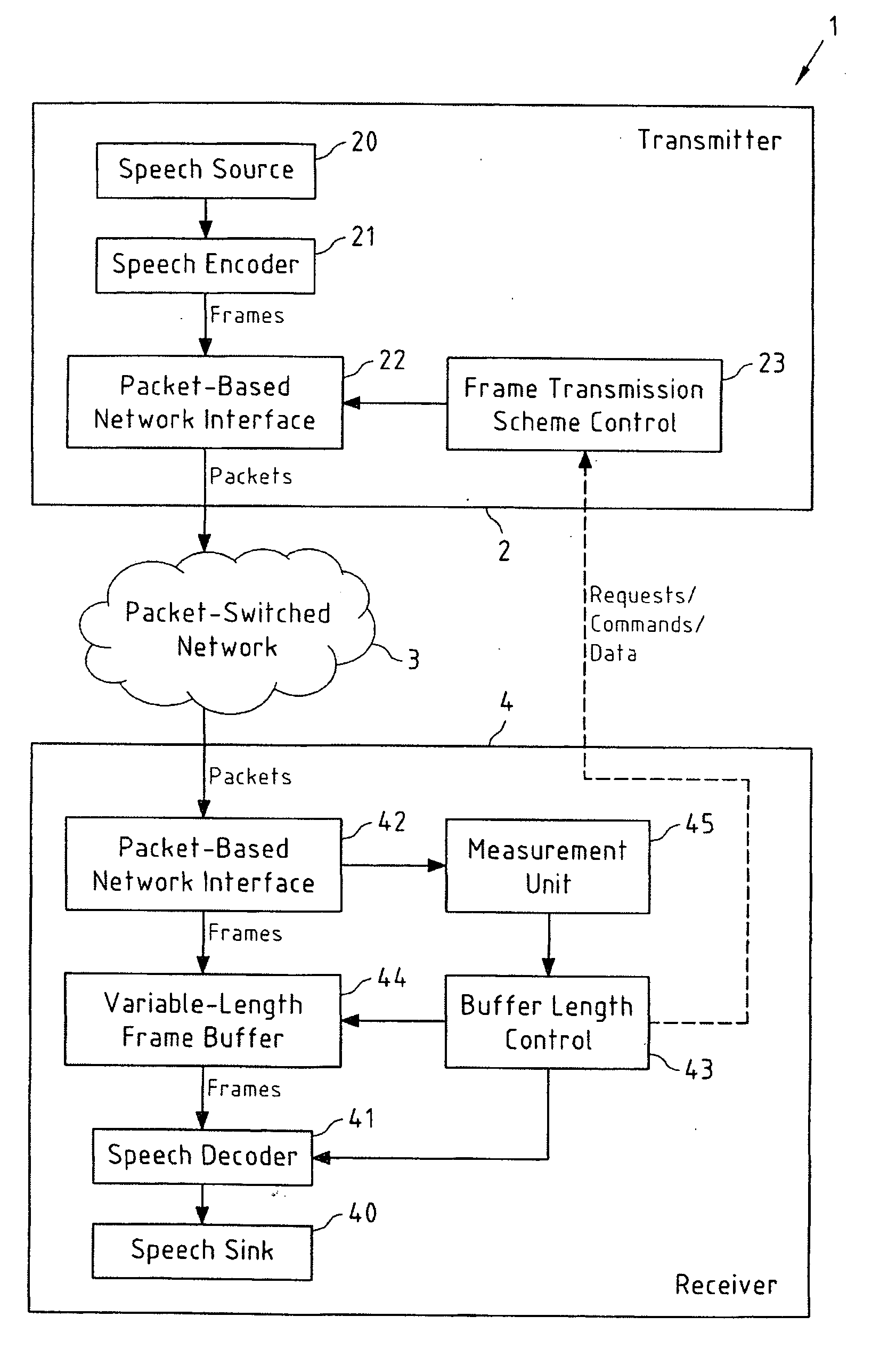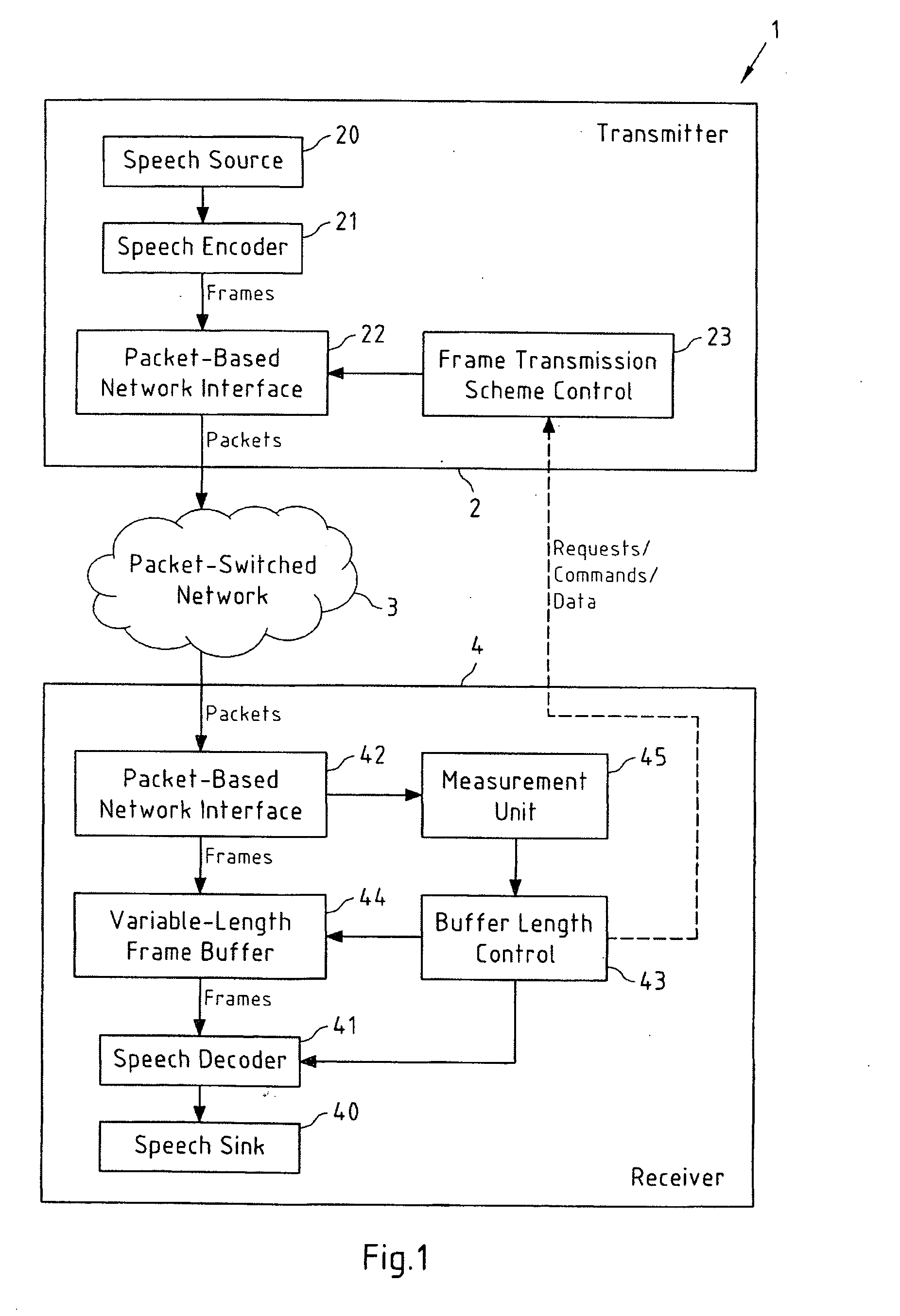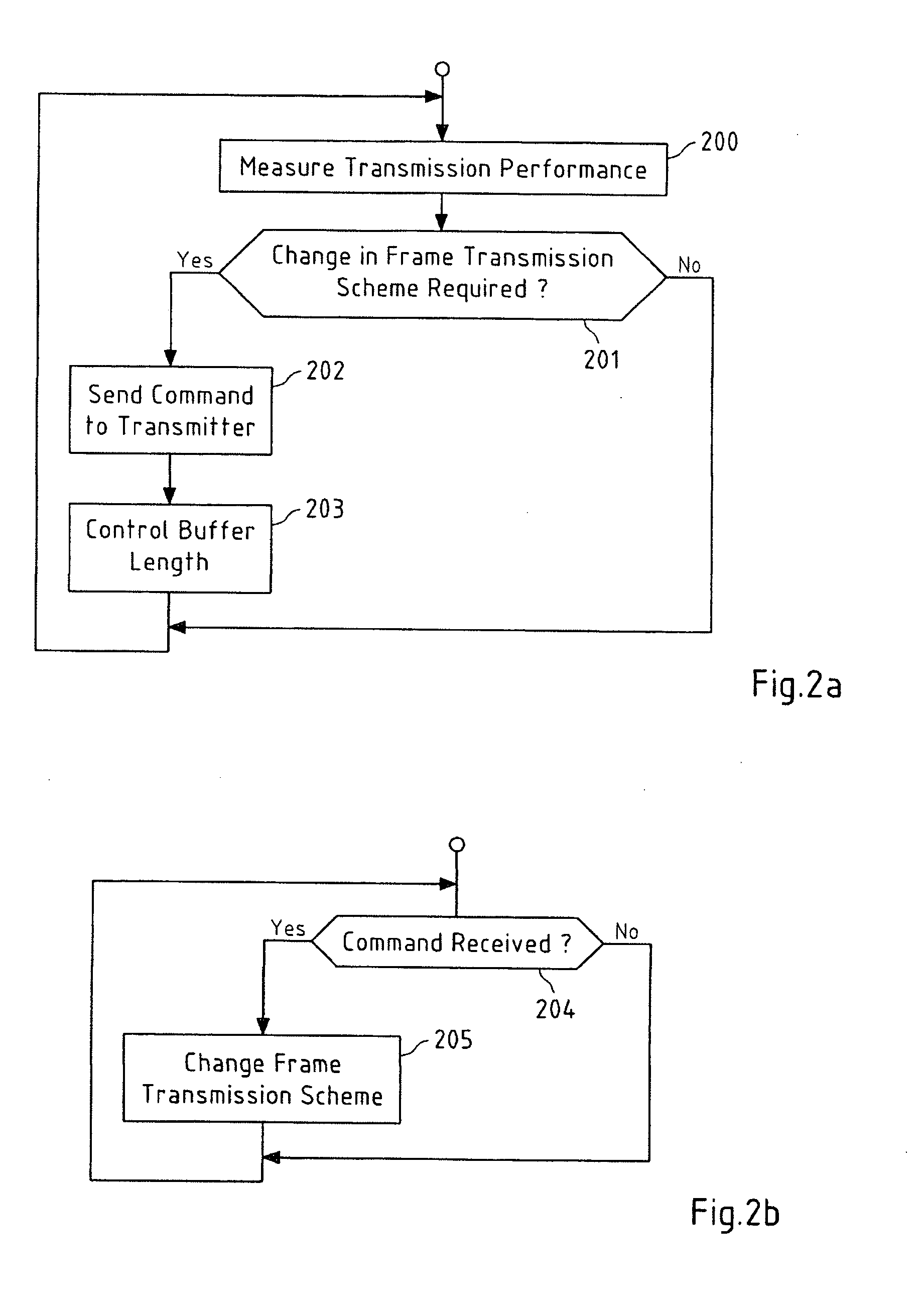Transmission scheme dependent control of a frame buffer
a frame buffer and transmission scheme technology, applied in the field of transmission scheme dependent control of a frame buffer, can solve the problems of error concealment algorithm not being able to utilize partially correct frames, application layer face frame loss, and buffer occupancy, so as to increase the length of the frame buffer and reduce data
- Summary
- Abstract
- Description
- Claims
- Application Information
AI Technical Summary
Benefits of technology
Problems solved by technology
Method used
Image
Examples
first embodiment
[0062] which is depicted in the flowcharts of FIGS. 2a and 2b, relating to the processing at receiver 4 and transmitter 2 (see FIG. 1), respectively, receiver 4 measures the transmission performance of the packet-switched network 3 in a step 200, for instance in terms of packet loss rate and jitter. Based on these measurements, receiver 4 decides, in a step 201, if a change in the frame transmission scheme at transmitter 2 is required. If this is the case, a command for a change in the frame transmission scheme is sent to transmitter 2 in a step 202. This command may for instance contain control information related for example to the desired frame transmission scheme, the number of redundant frames in frame redundancy transmission or the number of frames in frame aggregation transmission, to name but a few. Said command may for instance be a media adaptation command that further includes control information related to the codec mode (e.g. AMR / AMR-WB). The transmission of this comman...
second embodiment
[0064] which is depicted in the flowcharts of FIGS. 3a and 3b, relating to the processing at receiver 4 and transmitter 2 (see FIG. 1), respectively, receiver 4 once again measures the transmission performance of the packet-switched network 3 in a step 300. Based on these measurements, receiver 4 decides, in a step 301, if a change in the frame transmission scheme at transmitter 2 is required. However, instead of sending a command to transmitter 2, as it was the case in step 202 of the flowchart in FIG. 2a, buffer length control unit 43 now sends a request to change the frame transmission scheme to frame transmission scheme control unit 23 of transmitter 2 in a step 302. This request may contain control information as already described above with respect to the previous embodiment. Said request may for instance be a media adaptation request that further includes control information related to the codec mode (e.g. AMR / AMR-WB). In contrast to the command, the request leaves transmitte...
third embodiment
[0067] which is depicted in the flowcharts of FIGS. 4a and 4b, relating to the processing at receiver 4 and transmitter 2 (see FIG. 1), respectively, receiver 4 once again measures the transmission performance of the packet-switched network 3 in a step 400. In a step 401, the measured data is directly transmitted to transmitter 2, for instance in the form of RTCP receiver reports. This may be performed by the buffer length control unit 43 (as illustrated by the dashed line in FIG. 1), or by the measurement unit 45 itself. In a step 402, the buffer length control unit 43 nevertheless determines if a change in the frame transmission scheme is required or not, and, if this should be the case, controls the length of frame buffer 44 accordingly in a step 403. The flowchart then returns to step 400. The rationale behind this approach is that it is assumed that both transmitter 2 and receiver 4 use the same algorithm or a similar algorithm for determining whether a change in the frame tran...
PUM
 Login to View More
Login to View More Abstract
Description
Claims
Application Information
 Login to View More
Login to View More - R&D
- Intellectual Property
- Life Sciences
- Materials
- Tech Scout
- Unparalleled Data Quality
- Higher Quality Content
- 60% Fewer Hallucinations
Browse by: Latest US Patents, China's latest patents, Technical Efficacy Thesaurus, Application Domain, Technology Topic, Popular Technical Reports.
© 2025 PatSnap. All rights reserved.Legal|Privacy policy|Modern Slavery Act Transparency Statement|Sitemap|About US| Contact US: help@patsnap.com



